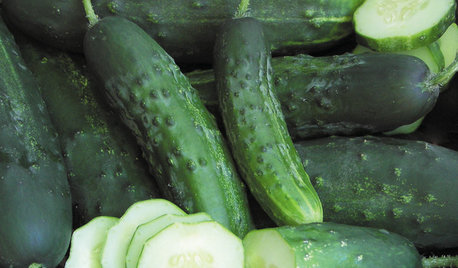tomatoes with Mosaic virus/tobacco virus
jeembeaux
10 years ago
Related Stories

EDIBLE GARDENSSummer Crops: How to Grow Tomatoes
Plant tomato seedlings in spring for one of the best tastes of summer, fresh from your backyard
Full Story
EDIBLE GARDENS8 Surefire Vegetables and Herbs for Beginning Gardeners
Learn the edible plants that are popular and easy to grow in a backyard or container garden
Full Story
SUMMER FRUITS AND VEGETABLESSummer Crops: How to Grow Cucumbers
Pick a peck for pickles or opt for fewer and raw — no matter how you slice them, cucumbers are great for summer gardens small to large
Full Story
COOL-SEASON CROPSCool-Season Vegetables: How to Grow Peas
Their sweetness isn't just for spring. Peas thrive in cool weather too, adding a garden-fresh note to soups, salads and more through fall
Full StoryMore Discussions






digdirt2
Desireea3
Related Professionals
Aloha Landscape Contractors · Belvedere Park Landscape Contractors · Berwyn Landscape Contractors · Broadlands Landscape Contractors · Hendersonville Landscape Contractors · La Vista Landscape Contractors · Pleasant Hill Landscape Contractors · Winchester Landscape Contractors · Antioch Landscape Contractors · Maplewood Landscape Contractors · Chicago Driveway Installation & Maintenance · Northbrook Driveway Installation & Maintenance · Pawtucket Driveway Installation & Maintenance · Randolph Driveway Installation & Maintenance · Riverside Driveway Installation & Maintenancetorquill
Michael
digdirt2
jeembeauxOriginal Author
torquill
jean001a
teraleverett
Jean